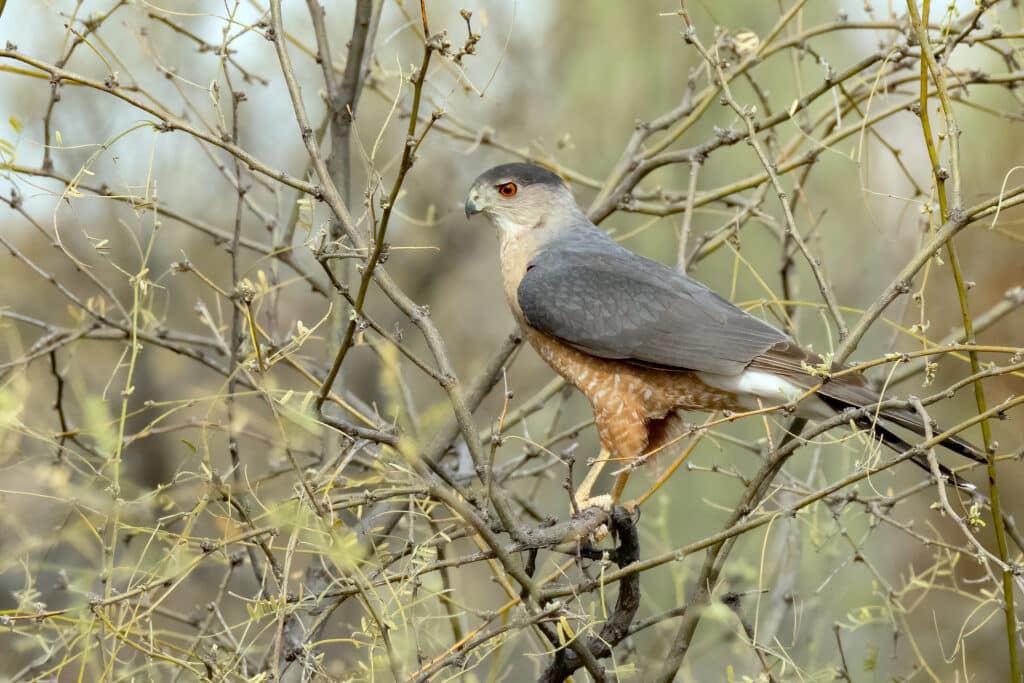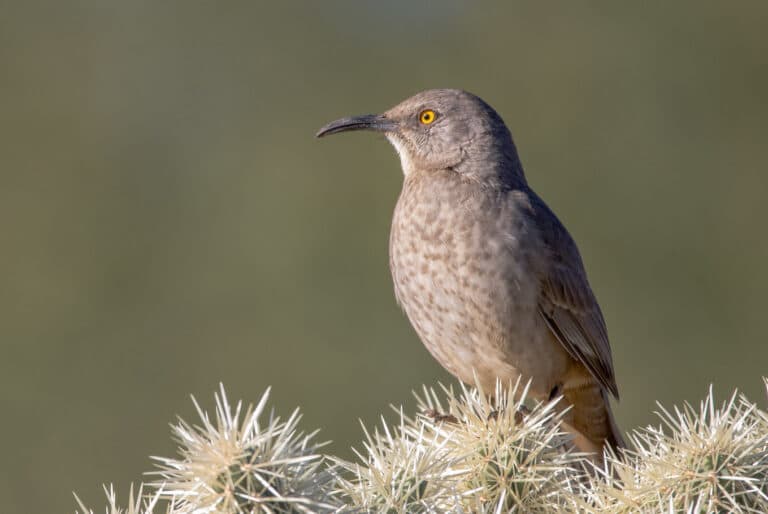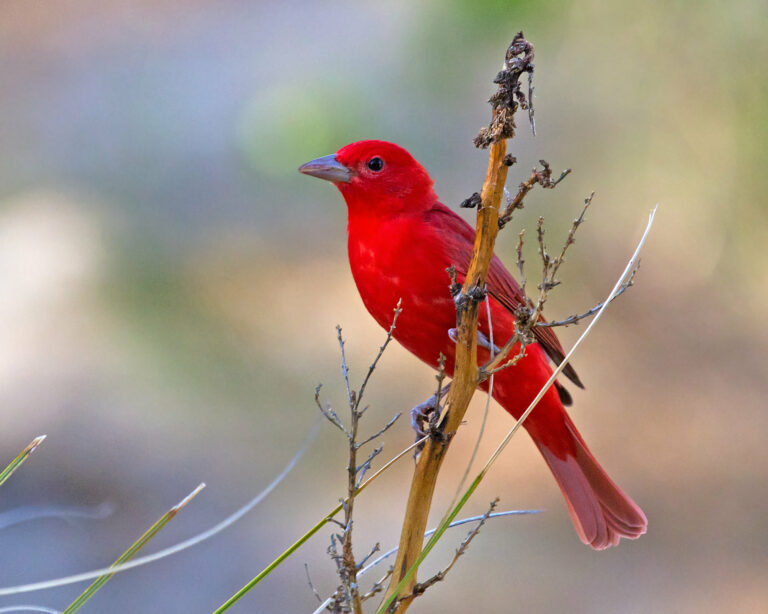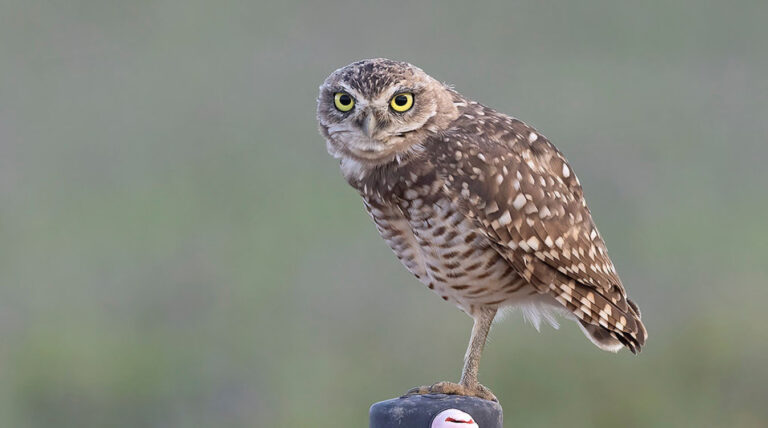If you live in urban Tucson and have seen hawks around your home, chances are it was a Cooper’s Hawk, a common year-round resident in Southeast Arizona. This medium-sized hawk has a long, banded tail and gray back, and adults have a salmon-colored, striped breast and piercing, red eyes (hawks in their first year of life have a white breast with brown streaks and yellow eyes). Cooper’s Hawks feed on doves and other small birds. These raptors clearly know which yards have bird feeders and take advantage of the concentration of prey. Tucson has one of the highest densities of Cooper’s Hawks in the nation, no doubt helped by their ease in finding food here. Listen for their loud kek-kek-kek-kek calls in your neighborhood and scan the tall trees nearby.
Cooper’s Hawks typically build nests in relatively large trees (eucalyptus or pine), and occupy many of the parks, golf courses, and cemeteries throughout Tucson. Their nesting cycle begins in February, and by late May some of the nestlings are fairly large, but not quite ready to leave the nest. Their temptation to explore becomes great this time of year before our rains begin—young birds may drop to the ground in search of water and shade when they become too hot (and cause a media sensation!). Please note, the birds are fine and should not be disturbed or handled unless they are in imminent danger, from dogs or traffic for example. You may not see them, but almost certainly the parents are nearby, carefully watching their young explorers.




